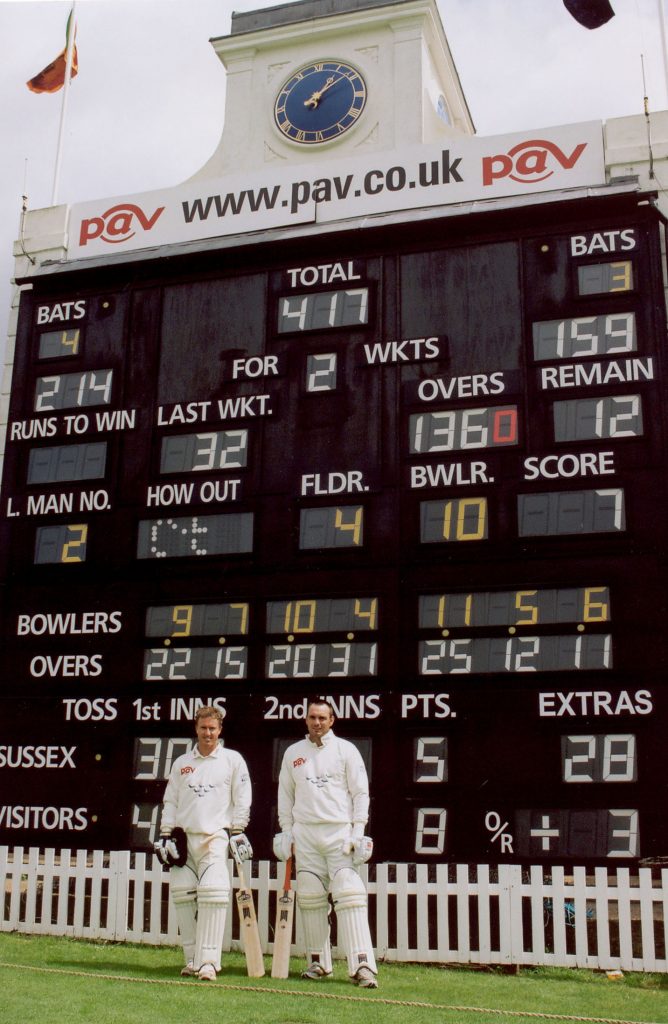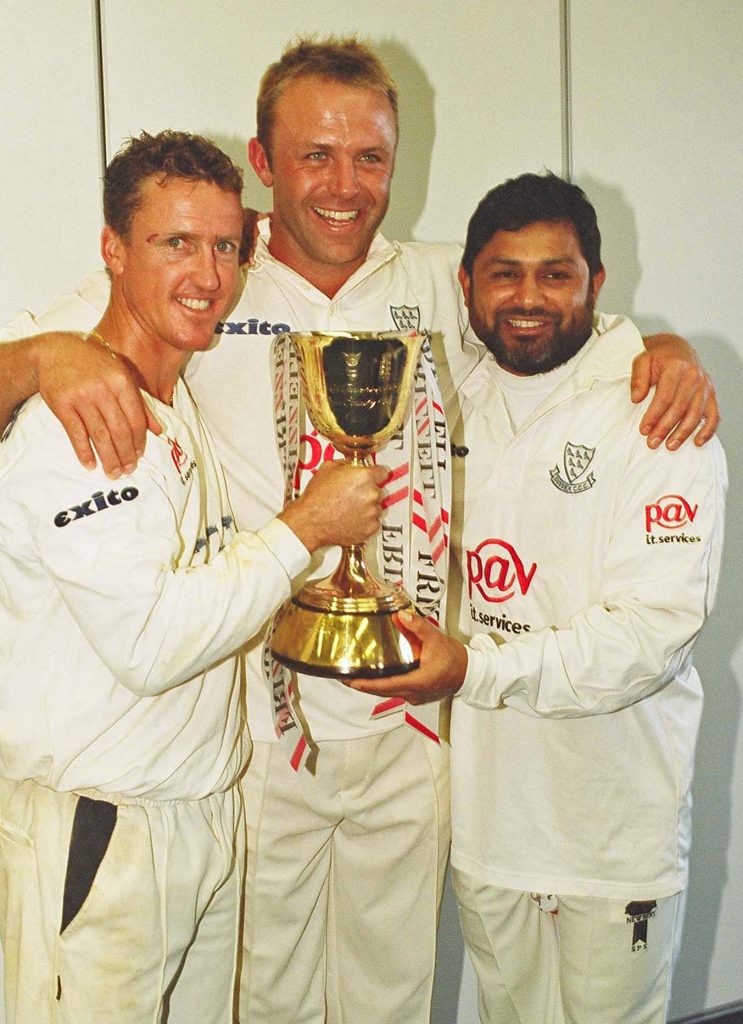Established himself in Australia
Murray Goodwin was born in Harare, Zimbabwe, on 11 December 1972. His family emigrated to Australia when he was thirteen and he was considered good enough to attend the Australian Cricket Academy. He made his debut for Western Australia in 1994/95 but found it difficult to establish a place in the side’s strong batting line-up. He began to show better form in the 1996/97 season beginning with scores of 127 and 77 against Queensland and finished the season with an average above 61. Goodwin’s experience in Australia playing on hard and fast wickets left him a predominantly back-foot player who could cut and pull fast bowlers with impunity. His quick feet also made him a good player of spin. It was clear to Goodwin that he wasn’t going to make the Australian Test side so in 1997 he returned to Zimbabwe and he immediately attracted the attention of the cricket selectors there. He made his international debut in the series against Sri Lanka and New Zealand in the winter of 1997/98, twice making scores above 50 and hitting 111 in a one-day match at Colombo.
In the Pakistan tour of Zimbabwe in 1998, Goodwin scored a huge 166 not out at Bulawayo and topped his side’s batting averages with an average of 100. With further success against India, Pakistan and then England in 2000, when he scored 148 not out at Trent Bridge, Goodwin accepted a contract from Sussex. Sussex had recently lost two openers and Goodwin was asked to open the batting, although he normally played at number three.
Some big scores in his first matches for Sussex
In 2001, in his first innings as an opener for Sussex, Goodwin scored 94 and that was followed shortly after by 195 against Hampshire, 109 against Worcestershire and then in the match against Nottinghamshire at Trent Bridge, he made 115 in the first innings and 203 not out in the second when he and Richard Montgomerie added 372 without loss before the declaration. This stand did not beat the stand of 490 made by Ted Bowley and John Langridge in 1933 but it was the third best for any wicket in the county’s history.

A record score
Another big score of 335* in 2003 was set in the match that secured Sussex’s first ever Championship. Of that match Goodwin said: “I didn’t know what the Sussex record was. Then someone mentioned it when I called for drinks. They said: “Carry on batting, you’re close to the record.” “I broke the record and they declared. That was amazing, and to do it in that particular match. A few years later, I managed to break the record again.’’
The four that earned the point to win the Championship, was hit by Goodwin off the bowling of Phil DeFreitas. At that point the Sussex players and the crowd began to celebrate, and the game was held up. As Goodwin said of the occasion: “The game stopped. Phil DeFreitas, the Leicestershire captain, was a gentleman, said “No worries.” It was obviously the first time ever for Sussex, being the oldest county. It was all surreal to me – celebrating in the middle of the game, rather than waiting until the game was complete.
I was a bit embarrassed. I was thinking about the Leicestershire boys and how we would feel if we were in their shoes.’’
Another club record score
In 2008 it was Goodwin who came to the rescue when the top and middle order collapsed against Nottinghamshire in the final match of the NatWest Pro40 competition. He scored 87 not out from 64 balls to steer Sussex to victory. On the last ball Sussex still needed three runs just to tie the match but it was Goodwin who secured a win with a six over long-on.
In 2009 Goodwin was not having a particularly good season having scored just 282 runs in 19 innings at an average of 16.5 when he arrived in Taunton for the match against Somerset. Some club members were thinking that at 36 he had lost the sharpness of his eye but any reservations they had about Goodwin were quickly cast to one side as Goodwin scored a club record score of 344* not out, an improvement on his own personal record set in 2003. The score was the sixth-highest in the county championship and the Sussex total of 742 for 5 declared was their highest in the history of the club, beating the 705-8 dec scored against Surrey at Hastings in 1902. Goodwin’s partnership with Carl Hopkinson of 363 in 73 overs for the fourth wicket was another club record beating the record of 326 set by James Langridge and George Cox against Yorkshire in 1949.
Indispensable
Goodwin played throughout the glory years becoming an indispensable part of the championship winning sides of 2003, 2006 and 2007. In the big scores he made, he showed himself to be one of Sussex’s all-time greats and was selected recently in the Cricket Museum’s Sussex All-Time Championship XI by curator Rob Boddie. In August 2012 Murray Goodwin was released by Sussex and he moved to Glamorgan.
Interview excerpts from Wisden Cricket Monthly, August 2017
